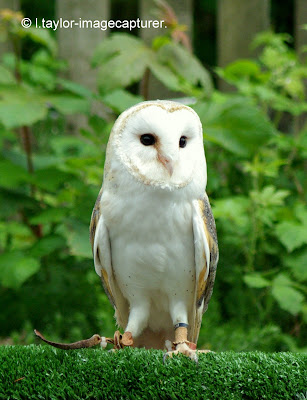Mc DONNELL PHANTOM F4-C ( U.S.A ).
Fighter and Fighter Bomber duties.
Armament - 4xRaytheon Aim - 7 E Sparrow 111B`s or 4xNWC Aim-9B Sidewinder 1A`s. Powerplant - 2xG.E. J79-GE-15`s with re-heat. Max Speed - 1,606mph.
~~~~<<<<>>>>~~~~
VICKERS V.700 VISCOUNT.
Medium range Airliner -- 40/50 passengers and 3 or 4 crew.
Powerplant - 4 Rolls Royce Dart R.DA.6 MK510 Turbo Prop engines driving 4 blade variable pitch propellers. Dimensions - wingspan - 93ft-8inches. Length - 81ft-10in. Weight - max 64,500lbs. Performance - max cruising speed - 334mph. Range with max payload - 1,330 miles.
~~~~<<<<>>>>~~~~
Undercarriage.
SEPECAT JAGUAR ACT.
This unique aircraft was used to develop the Electronic Flying Control System used on the Eurofighter Typhoon.
~~~~<<<<>>>>~~~~
FOLLAND GNAT F1.
The single seat Gnat 1 fighter was the forerunner of the two seat Gnat T1 trainer which achieved fame with the Red Arrows aerobatic team. Designed by Follands chief engineer Mr W Petter. The Gnat represented an attempt to move away from the increasing size and cost of modern fighter aircraft.
~~~~<<<<>>>>~~~~
DE HAVILLAND DOVE MK2.
Feeder - Liner Transport.
Armament - none. Powerplant - 2xDH Gipsy Queen 345hp in line piston engines. Max speed - 210mph.
~~~~<<<<>>>>~~~~
BRISTOL 188.
High speed research.
Built mainly of stainless steel, this aircraft was designed to investigate the effects of heat on aircraft structures at very high speeds. To protect the pilot against heat build up a special cockpit refrigeration system was installed. Nicknamed Flaming Pencil, only two Bristol 188s ever flew, a third being used for ground tests.
~~~~<<<<>>>>~~~~
GLOSTER METEOR F8 ( prone )
A much modified Meteor F8 fighter, the prone position meteor was used to evaluate the advantages of coping with the effects of gravity while flying lying down. In practice the difficulties of operating the controls of the aircraft outweighed the advantages. The development of special aviation clothing offered a simpler solution to the problem of counteracting `G` forces and the prone position was abandoned.
~~~~<<<<>>>>~~~~
HUNTING H126.
Research prototype.
This unusual looking research aircraft was capable of flight at speeds as low as 32mph by virtue of it`s Jet Flaps which used thrust ducted from the main engines to increase lift.
~~~~<<<<>>>>~~~~
FAIREY FD2.
Supersonic research.
In the late 1940s Britain was trailing far behind in supersonic aircraft design. To try to retrieve matters the ministry of supply issued a specification for a supersonic research aircraft and Fairey set about meeting this with a delta winged aircraft designed for investigation into flight and control at transonic and supersonic speeds. This aircraft is the second of only two FD2s built.
~~~~<<<<>>>>~~~~
DE HAVILLAND DH112 VENOM FB4.
Despite a strong resemblance to the earlier De Havilland Vampire the Venom was in fact a largely new design, incorporating an entirely new wing and other refinements to take full advantage of the more powerful De Havilland Ghost engine.
~~~~<<<<>>>>~~~~
ENGLISH ELECTRIC CANBERRA PR9.
High altitude reconnaissance aircraft.
The Canberra has been one of the worlds outstanding photographic reconnaissance aircraft. The Royal Air Force identified that the Canberra Jet bombers height and speed performance made it ideal for development into a photo reconnaissance aircraft. It has been a major part of the RAFs intelligence gathering capability for many years.
~~~~<<<<>>>>~~~~
GLOSTER JAVELIN FAW.8 XH992.
Night and all weather interceptor.
Aircrew - 2. Max speed - 620mph. Range - 930 miles. Armament - two 30mm Aden Cannon, four Firestreak missiles. Powerplant - two Bristol Siddeley Sapphire engines each rated at 12,390lbs static thrust.
~~~~<<<<>>>>~~~~
SAAB AJ/SH37 VIGGEN 37918/57.
Multi role fighter.
Aircrew - one. Max speed - Mach 2 1,321mph. Landing speed - 137mph. Range - 1,240 miles. Armament - 1x30mm Oerliken built in cannon plus up to 6 missiles ( radar and I.R. air to air ). Powerplant - Volvo Flygmotor type RM8B P and W JT8D-22 with Swedish afterburner and thrust reverser, rated at 16,200lbs static thrust.
~~~~<<<<>>>>~~~~
BRITISH AEROSPACE JETSTREAM T MK1 XX492.
Multi engine pilot trainer.
Aircrew - two plus instructor and seating for up to six passengers. Max speed - 285mph. Range - 1,382 miles. Armament - none. Powerplant - two 940 E.S.H.P Turbomeca Astazou XV1 turboprops.
~~~~<<<<>>>>~~~~



















































